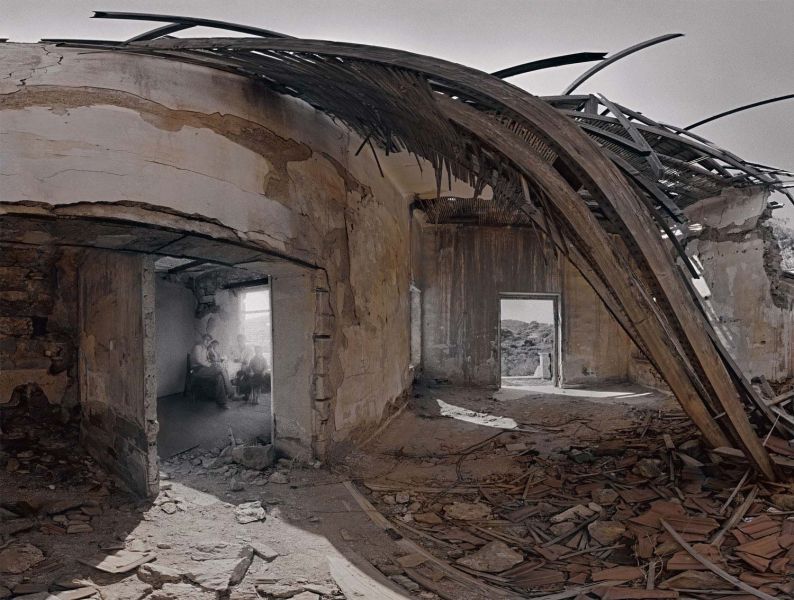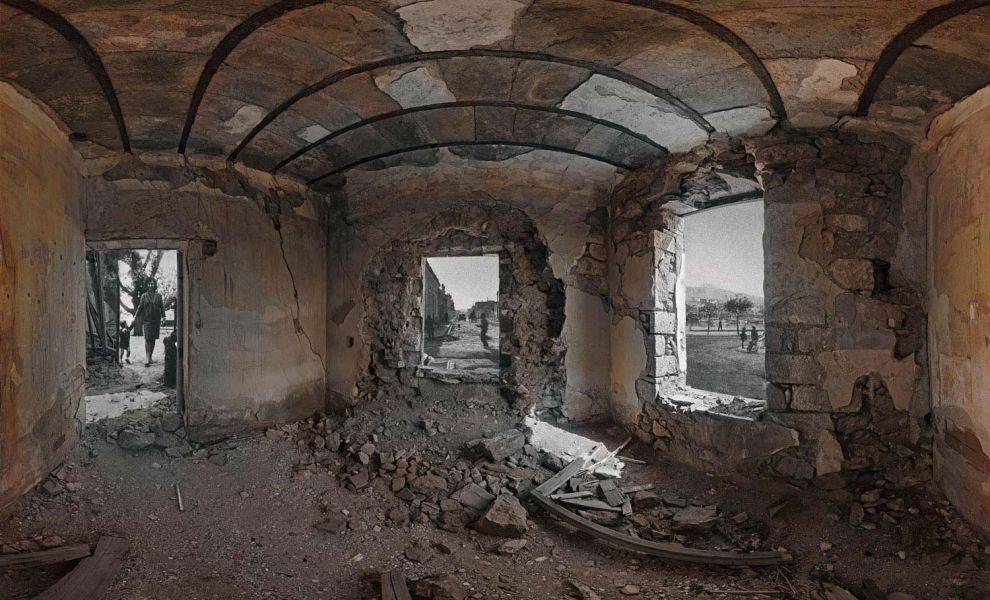MARIOS SPILIOPOULOS/ Painter, professor of the ASFA
Christos Simatos is a thorough-bred Photo-Grapher/Writer. He writes small narrative “optical texts” using light. He exposes his inner self, the dark parts of his consciousness, to the light that radiates out of the ruins of our modern history.
His photographic glance, with its surgical insight, pushes his means of expression, namely his photography, to its boundaries, to an almost super-natural definition. He symbolically places himself in every architectural building-shell-ruin he photographs, in the predator versus victim role, in this antagonizing interplay between the familiar and the unfamiliar.
The “unfamiliar familiarity” of the ruined residences in Lavrion which he captures with his camera, belongs to the “divergent heterotopias”, as Michel Foucault names them. This is achieved by recording the time of desolation, destruction and annihilation of these “arks of memory” (residences) that once existed in the distant past as the works of humans, consequently as hives of life and creation.
Photography can delay death, but in no way prevent it. The photographic take of a ruined residence at its present state by Christos Simatos creates an unfamiliar sight of destruction that cannot encompass the moment in its whole. It freezes the specific moment in time and leaves it for the texture time endows on things to “speak”, narrate, recall sentiments and emotions from the past to the memory of the viewer.
Christos Simatos, acknowledging this function, precedes the viewer by inserting in the openings of the ruined buildings black-and-white photographs of a past time, when the ruins where once familiar hives throbbing with life. Inside the colored present displays of the ruins, he masterly “embeds” black-and-white photographs of the past, turning the present ruins into functional shelters of the life which once flooded these residences.
This peculiar co-existence, in the same photographic work, of the colored dead present alongside with the black-and-white once lively past, creates an eloquent “optical text”-body, where time is substantiated in a syn-chronic narrative, full of emotion and nostalgia.
Concluding, I am confident that the new pictorial quests of Christos Simatos have borne fruit, since they constructed, with scientific accuracy, an “optical text” to be read in between the cracks of present time. Christos Simatos’ photographs tell the consolatory “story” of the construction of our future, through the syn-chronic blending of the ruined past with the lively present, in the perpetual cycle of the eternal recurrence.
The “dialectic images” of Walter Benjamin have found a contemporary pictorial expressor.


